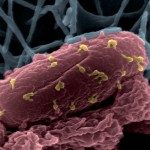Link to Pubmed [PMID] – 23505426
PLoS ONE 2013;8(3):e57317
BACKGROUND: Treatments designed to correct cystic fibrosis transmembrane conductance regulator (CFTR) defects must first be evaluated in preclinical experiments in the mouse model of cystic fibrosis (CF). Mice nasal mucosa mimics the bioelectric defect seen in humans. The use of nasal potential difference (V(TE)) to assess ionic transport is a powerful test evaluating the restoration of CFTR function. Nasal V(TE) in CF mice must be well characterized for correct interpretation.
METHODS: We performed V(TE) measurements in large-scale studies of two mouse models of CF–B6;129 cftr knockout and FVB F508del-CFTR–and their respective wild-type (WT) littermates. We assessed the repeatability of the test for cftr knockout mice and defined cutoff points distinguishing between WT and F508del-CFTR mice.
RESULTS: We determined the typical V(TE) values for CF and WT mice and demonstrated the existence of residual CFTR activity in F508del-CFTR mice. We characterized intra-animal variability in B6;129 mice and defined the cutoff points for F508del-CFTR chloride secretion rescue. Hyperpolarization of more than -2.15 mV after perfusion with a low-concentration Cl(-) solution was considered to indicate a normal response.
CONCLUSIONS: These data will make it possible to interpret changes in nasal V(TE) in mouse models of CF, in future preclinical studies.

